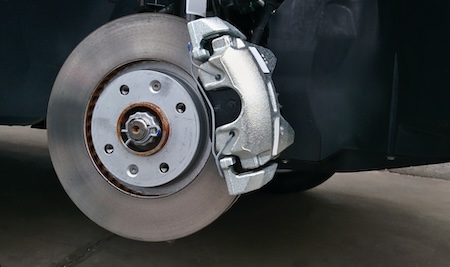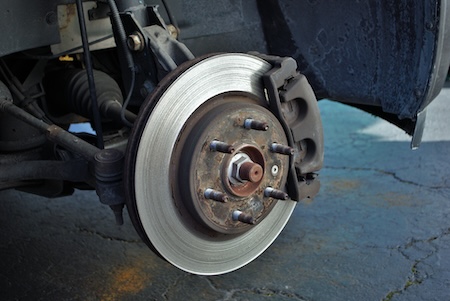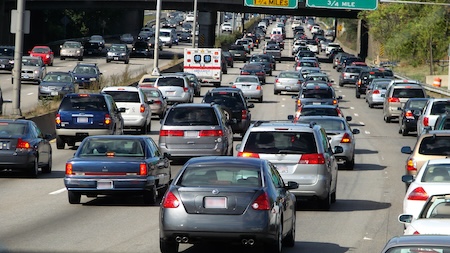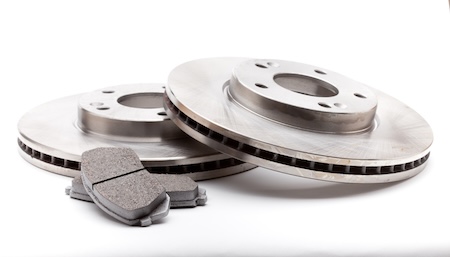Your brakes are one of the most important safety features on your car. So when they start squeaking, grinding, or feeling a little “off,” it’s more than just an annoyance. It’s a warning sign.
We’ve seen firsthand how regular brake maintenance can make all the difference. Not just in how your vehicle performs, but in how long your braking system lasts.
Let’s break down everything you need to know to keep your brakes quiet, responsive, and safe, whether you’re navigating icy Denver streets or taking a weekend drive through the mountains.
Why Brake Maintenance Matters
Brake systems are complex, and over time, wear and tear is inevitable. But how you maintain your brakes will determine whether they last 30,000 miles or 70,000 miles. And whether you catch a dangerous problem early or face a costly, unexpected repair.
Ignoring your brakes can lead to:
- Longer stopping distances
- Uneven wear on tires
- Noise and vibration
- Brake failure in extreme cases
Safe braking is more than performance. It’s about protecting you and everyone else on the road.
What Causes Noisy or Unresponsive Brakes?
As cars age, parts start to wear down. Rarely do they all “go” at once. Instead, they alert you to potential problems. These are the signs that your brakes might be telling you they need attention.
1. Squeaking or Squealing
That high-pitched noise when you apply the brakes? It’s usually the wear indicator on your brake pads. It’s there on purpose to let you know it’s time to replace them.
Other possible causes:
- Dust or debris trapped between the pad and rotor
- Moisture or rust buildup
- Cheap or low-quality brake pads
2. Grinding Sounds
Grinding means your brake pads are worn down completely and metal is contacting metal. This isn’t just noisy, it’s dangerous.
3. Soft or Spongy Brake Pedal
If your brake pedal feels soft or you have to push it farther to stop, it could indicate:
- Air in the brake lines
- Low brake fluid
- A leak in the hydraulic system
4. Vibration or Shaking When Braking
This is often caused by warped rotors or uneven pad wear. It can also be a sign that your calipers aren’t functioning properly.
Top Tips for Keeping Your Brakes in Top Condition
Want quieter, more responsive brakes that keep you safe and confident on the road? We have a few expert brake maintenance tips for you to follow:
1. Get Regular Brake Inspections
You don’t have to wait until something feels “off” to check your brakes. We recommend a full brake inspection at least once a year, or every 12,000 miles.
During a brake inspection, we’ll check:
- Brake pad thickness
- Rotor condition
- Brake fluid levels
- Hoses and calipers
- Signs of leaks or corrosion
Bonus: Brake inspections are often included in a multi-point inspection when you come in for routine service.
2. Replace Brake Pads Before They Wear Down
Don’t wait until your pads are paper-thin. Most pads need replacing between 30,000 and 50,000 miles, but it depends on your driving style and environment.
Denver drivers often deal with:
- Stop-and-go city driving
- Mountain driving with steep grades
- Cold weather and road salt
All of these can wear out pads faster. Catching wear early helps protect your rotors and keeps your braking quiet.
3. Choose Quality Brake Parts
All brake pads are not created equal. Cheap pads might save money in the short term, but they’re often louder, less effective, and wear out faster.
When we replace your brakes, we use OEM or high-quality aftermarket parts designed for your make and model. They perform better, last longer, and offer smoother, quieter braking.
4. Flush and Replace Brake Fluid as Needed
Brake fluid is hygroscopic—it absorbs moisture over time. That moisture can corrode brake lines and reduce braking power.
We recommend replacing your brake fluid every 2 to 3 years, or as advised in your vehicle’s maintenance schedule.
Signs it’s time for a brake fluid change:
- Brake pedal feels soft
- Fluid looks dark or dirty
- ABS light is on
5. Avoid Riding the Brakes
If you constantly rest your foot on the brake pedal or brake hard and often, you’re accelerating brake wear, and creating more heat, which leads to noise and warping.
Try this instead:
- Leave more space between you and the car ahead
- Slow gradually
- Downshift when driving downhill (if your car allows it)
6. Listen and Act Early
The biggest mistake drivers make? Ignoring the early signs. That little squeak might be harmless today, but give it a few weeks, and you could be looking at warped rotors, seized calipers, or worse.
When something doesn’t feel right, bring it in. We’d rather check it and send you on your way than see you come back with major damage.
What Happens During a Brake Service at Express Car Care?
Here’s what to expect when you bring your car to our Denver shop for brake maintenance:
Thorough Inspection
We start by inspecting your pads, rotors, calipers, hoses, fluid, and hardware.
Honest Assessment
If everything looks good, we’ll tell you! If something’s worn, we’ll show you exactly what’s wrong, and what your options are.
Expert Repair or Replacement
We’ll replace worn pads, resurface or replace rotors if needed, flush brake fluid, and test the system.
Road Test and Safety Check
No repair is complete until we’ve road-tested your vehicle and confirmed it stops smoothly and silently.
Don’t Wait Until It’s Too Late
Brakes aren’t something you want to gamble with, especially in unpredictable Colorado weather. Whether you’re navigating city streets, snow-packed roads, or mountain highways, responsive braking could save your life.
We’re here to keep your vehicle safe, quiet, and road-ready.
Peace of Mind Starts with Your Brakes
Brake maintenance doesn’t have to be complicated or expensive. With regular checks, timely replacements, and smart driving habits, you can keep your brakes whisper-quiet, lightning-responsive, and ready for anything the road throws your way.
Need your brakes checked? Stop by today or schedule your inspection now. We’re here to keep you—and your car—safe.
Your brakes will thank you. And so will your passengers.









